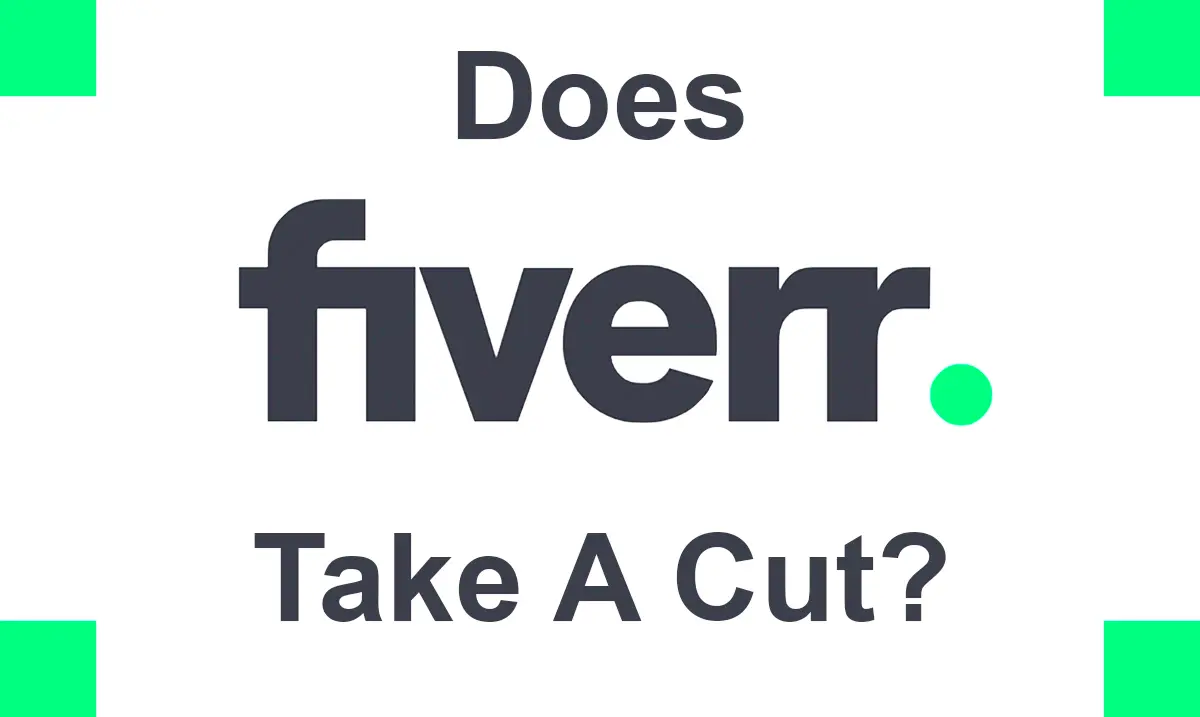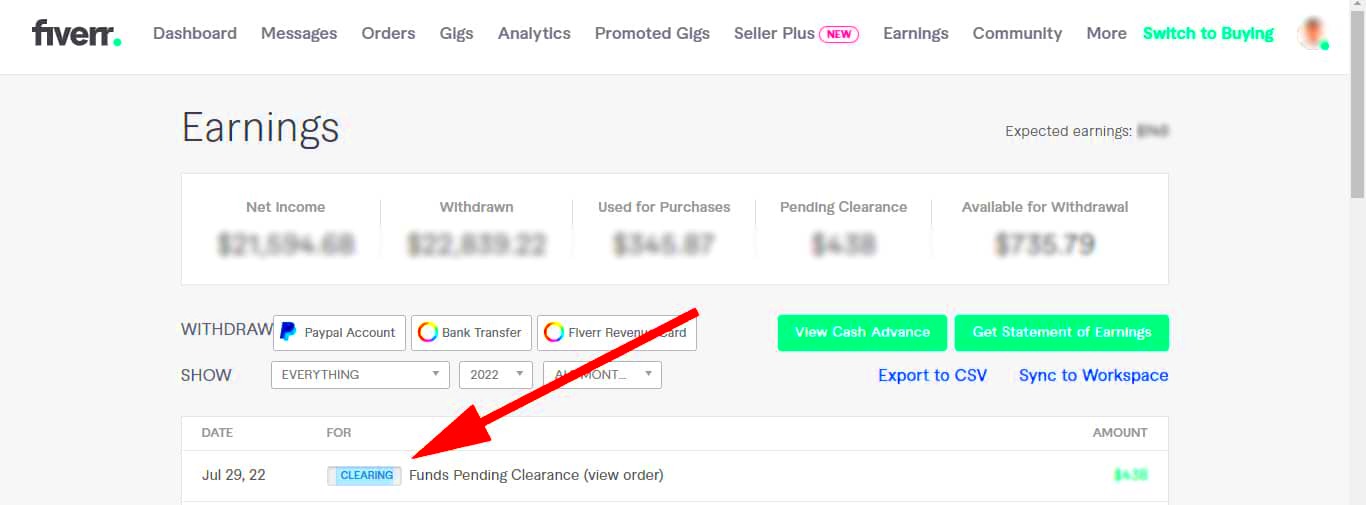Fiverr is a popular platform where freelancers offer a wide range of services to clients across the world. From graphic design to writing, Fiverr allows individuals to monetize their skills easily. However, as a freelancer, it’s important to understand Fiverr’s fee structure before getting started. Fiverr charges fees on each transaction, which includes a service fee and payment processing costs. Understanding these fees will help you plan better and avoid any surprises when you get paid. Let’s dive into how Fiverr charges freelancers and what you can expect from the platform.
How Fiverr Charges Freelancers

Fiverr takes a percentage of every transaction that occurs between you and your client. This fee helps the platform maintain its services, promote your gigs, and offer customer support. Here’s a breakdown of the key charges:
- Service Fee: Fiverr charges a service fee on the total value of each order. This is a flat 20% fee, meaning Fiverr takes 20% of the amount you earn from a completed gig.
- Payment Processing Fee: When you withdraw your earnings, Fiverr also takes a small fee for processing your payment. This fee can vary depending on your withdrawal method.
- Additional Charges: There may be additional costs depending on the payment method, such as bank fees or PayPal charges. These are outside of Fiverr's control but can impact how much you ultimately receive.
It’s important to factor these fees into your pricing strategy to ensure you're still earning what you expect after Fiverr takes its cut.
Also Read This: How to Follow Up with Someone on Fiverr as a Seller
Fiverr’s Service Fee Breakdown

Fiverr’s service fee is one of the most significant deductions from your earnings. Here’s a detailed breakdown of how it works:
| Transaction Amount | Fiverr Fee |
|---|---|
| Any amount | 20% of total amount earned |
This means if you charge $100 for a gig, Fiverr will take $20 as a service fee, leaving you with $80. The 20% is applied to the total order value, including any extra charges, tips, or add-ons that the client chooses. Even if the client provides a tip, Fiverr still takes 20% of that as well. So, as a freelancer, it's essential to set your prices in a way that accounts for this fee to avoid underselling your services.
While Fiverr’s 20% fee might seem high, it’s important to remember that the platform handles most of the logistics, such as payment processing, marketing, and providing a large pool of potential clients. These factors make Fiverr an attractive option for freelancers, but understanding the service fee will help you navigate the platform more effectively.
Also Read This: Does Fiverr Report to Universities? Everything You Need to Know
Understanding Fiverr’s Payment Processing Fee
When you earn money on Fiverr, you’re not just dealing with Fiverr’s service fee. There’s also a payment processing fee, which covers the costs of handling your payments securely. This fee can vary depending on how you choose to withdraw your earnings. Unlike the flat service fee, the payment processing fee is typically a smaller percentage of your total earnings. Let’s break down how this works:
- Withdrawal Method: The payment processing fee depends on the withdrawal method you use. For example, withdrawing to PayPal or a bank account might have different fees.
- Fixed Fee: Some methods charge a fixed fee, like PayPal, which could be around $1 per transaction.
- Variable Fee: Other methods, such as bank transfers, may have variable fees depending on the amount you are withdrawing or the country you’re in.
The fee itself is typically small but important to consider, especially if you're withdrawing large sums of money. Fiverr doesn’t have control over these fees, as they are set by payment processors like PayPal or banks. Always check the withdrawal options and their associated fees to ensure you are comfortable with how much you'll actually receive after these deductions.
Also Read This: Can You Bid for Jobs on Fiverr?
What Happens After a Fiverr Gig Sale
Once you make a sale on Fiverr, a lot happens behind the scenes before you get paid. Here’s a step-by-step look at what to expect after a gig is sold:
- Order Confirmation: Once the client places an order, Fiverr confirms it, and the funds are held in escrow. This means the client’s payment is secured, but you won’t receive the funds yet.
- Work Completion: After you deliver the work, the client has three days to review it. If there are no issues, the order is marked as complete, and Fiverr begins processing your payment.
- Fiverr’s Service Fee: Before any payment is made to you, Fiverr takes its 20% service fee (as discussed earlier). This is deducted from the total order value.
- Payment Processing: Once Fiverr’s fee is deducted, the remaining funds are ready for withdrawal. This is when the payment processing fee comes into play, which depends on how you choose to receive your earnings.
- Withdrawal: After the payment processing, you can withdraw your earnings through your preferred payment method. Keep in mind that Fiverr’s processing might take a few days to complete.
The entire process ensures that both you and your client are protected, but it’s important to be aware of the timing and fees involved to avoid surprises when you get paid.
Also Read This: Top Platforms to Promote Your Fiverr Gig for Maximum Visibility
Fiverr’s Commission Percentage Explained
Fiverr’s commission structure can seem a bit confusing at first, but understanding how it works will help you plan your business better. Fiverr charges a flat commission of 20% on each order. This means Fiverr takes 20% of the total payment you receive for a completed gig, including any tips, extra services, or add-ons that the client purchases. Here’s a more detailed look at the commission:
| Gig Price | Fiverr Commission | You Keep |
|---|---|---|
| $50 | $10 | $40 |
| $100 | $20 | $80 |
| $200 | $40 | $160 |
As you can see, Fiverr takes 20% regardless of whether your gig price is small or large. It’s important to consider this when pricing your services. While the 20% fee might seem steep, Fiverr provides access to a massive global marketplace and handles most of the administrative tasks, including marketing and customer support. It also guarantees payment once the work is delivered, which can be a major benefit for freelancers who want a more secure and reliable income stream.
Some freelancers may feel that Fiverr’s commission is high, but it’s worth noting that it helps cover the platform’s costs, including marketing, customer service, and tools that help you connect with clients worldwide. Ultimately, it’s up to you to decide if the trade-off is worth it based on your individual business needs.
Also Read This: How Does Fiverr Website Work?
Tips to Maximize Earnings on Fiverr
Maximizing your earnings on Fiverr doesn’t just depend on your skills; it also involves strategic planning. Here are some tips to help you boost your income while navigating Fiverr’s fees:
- Set Competitive Prices: Research other sellers in your category to determine the going rates. Pricing your services competitively can help attract more clients. However, ensure that your prices cover Fiverr’s 20% fee, along with any other costs.
- Offer Add-Ons: Fiverr allows you to offer extra services, known as “gig extras.” These can increase your earnings for the same amount of work. For example, offering faster delivery or additional revisions can attract clients willing to pay more.
- Build a Strong Profile: A well-crafted profile can make a huge difference. Ensure that your gig descriptions are clear, concise, and showcase your unique value. Include a professional photo and relevant samples of your work.
- Ask for Reviews: Positive reviews are key to building trust with potential clients. After completing a job, kindly ask your satisfied clients to leave a review. Good feedback boosts your visibility on the platform and helps you stand out.
- Stay Active: Fiverr tends to promote active sellers. By responding to messages quickly and regularly updating your gigs, you increase your chances of appearing in search results.
By applying these strategies, you can offset Fiverr’s fees and increase your earnings. Don’t forget to adjust your pricing over time as your experience grows and demand for your services increases.
Also Read This: What Is Fiverr’s Email Address?
FAQ About Fiverr’s Fees and Charges
Understanding Fiverr’s fees and charges can be tricky for new freelancers. Here are some common questions answered to help clear up any confusion:
- What percentage does Fiverr take from each gig? Fiverr takes a 20% commission on each gig you sell, including any tips or add-ons. This is deducted from your total earnings before payment is processed.
- Are there any other hidden fees? Fiverr doesn’t have any hidden fees, but there may be charges from third-party services like PayPal or your bank when you withdraw your earnings.
- Can Fiverr’s fees be avoided? Unfortunately, Fiverr’s 20% service fee is non-negotiable. However, you can reduce the impact by setting your prices to account for the fees and offering high-quality services to get more clients.
- Do Fiverr’s fees apply to tips? Yes, Fiverr’s service fee applies to any tips given by clients, which is part of their total payment for your services.
- How can I withdraw my earnings from Fiverr? You can withdraw your earnings via PayPal, bank transfer, Fiverr Revenue Card, or a few other methods. The payment processing fees depend on the withdrawal method you choose.
Hopefully, these answers help clarify any questions you may have about Fiverr’s fees and charges. It’s always best to check Fiverr’s official documentation for the latest updates on their fee structure.
Conclusion: How to Manage Fiverr Fees Effectively
While Fiverr’s fees can feel like a burden, especially when you’re just starting out, managing them effectively is key to success. Here’s how you can make the most of Fiverr while accounting for their fees:
- Factor in the fees when pricing your services: To avoid losing out, include Fiverr’s 20% commission and any payment processing fees in your prices. This ensures you still get what you want after deductions.
- Offer additional services and gig extras: Increase your earnings per order by offering extras. Clients are often willing to pay more for faster delivery, extra revisions, or additional features.
- Optimize your gig for search: Fiverr’s search algorithm favors active and well-optimized gigs. Regularly update your profile and gig descriptions to keep them relevant, and be sure to respond quickly to inquiries.
- Focus on building a strong reputation: Satisfied clients who leave positive reviews can help boost your profile and attract more buyers. The more reviews you get, the higher your chances of standing out and getting more orders.
By strategically managing Fiverr’s fees, you can still make good money on the platform. As your experience grows and you fine-tune your approach, you’ll be able to navigate the fees more effectively and maximize your earnings.




